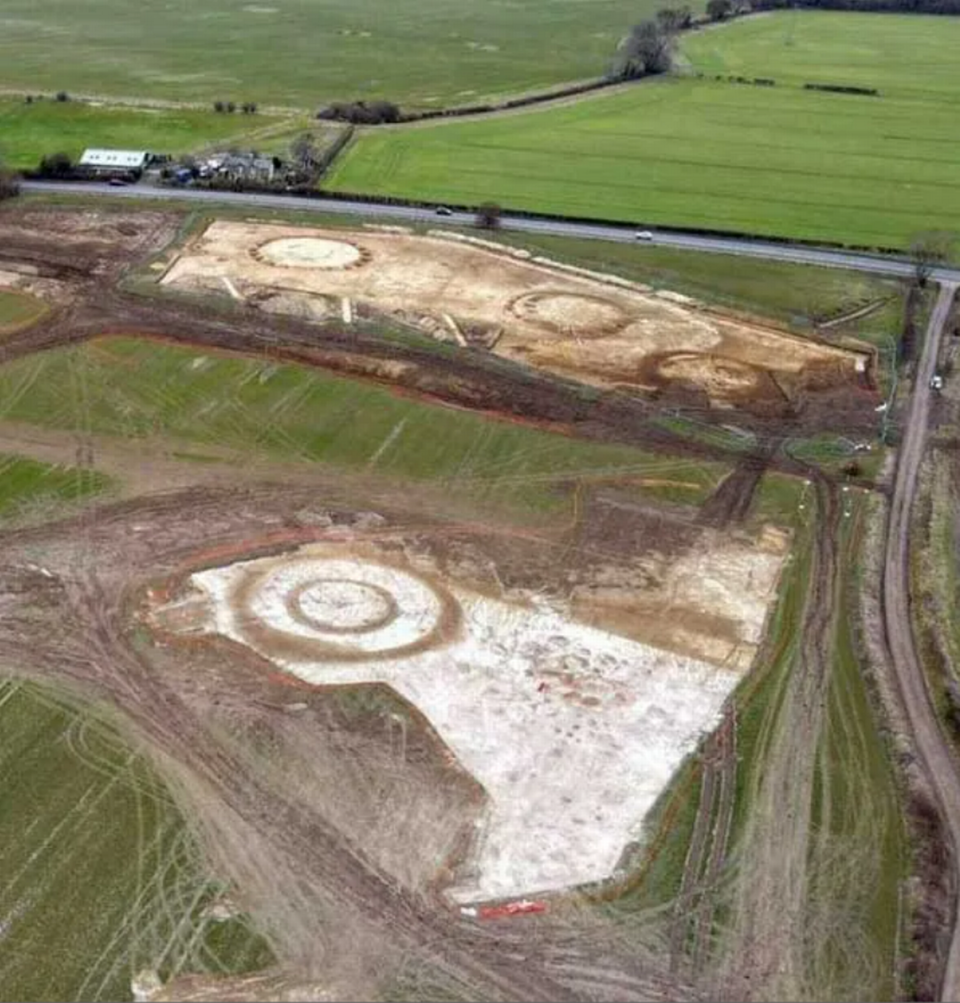Massive circular burials — over 3,500 years old — found near Stonehenge. Take a look
The rolling green landscape of southern England hid a secret. Several secrets, in fact. Tucked below the unassuming grass sat a millennia-old cemetery.
The long-forgotten burials were unearthed by archaeologists in southern Salisbury ahead of a residential construction project, Cotswold Archaeology said in a May 31 news release. The site is less than 10 miles south of Stonehenge, the iconic prehistoric monument.
The cemetery dates to the Bronze Age, a period from 2400 B.C. to 1500 B.C., the release said. It has about twenty burials arranged in barrow style. Barrow-style graves have a central burial covered with a mound and a surrounding ditch creating a circular structure.
Stonehenge was also constructed during the Bronze Age, according to Britannica. The monument was built in several stages from 3000 B.C. to 1520 B.C.
The circular barrow graves are arranged in small clusters of two to six burials, archaeologists said. Aerial photos show three of these graves that are over 3,500 years old.

Archaeologists have identified ten burials and two more cremations, the release said.
In one barrow, they found a “rare” mass grave where several adults and children were buried, the release said. The grave had been changed from an oval to a circular shape, indicating it might date as far back as the Neolithic Age.
Another burial contained a child and a piece of pottery in a style from northern England, archaeologists said
Barrow graves range from about 30 feet in diameter to over 160 feet in diameter, experts said. Most often, the graves are between about 60 to 100 feet across.

Underneath the burials, archaeologists uncovered several pits with Neolithic items, the release said. These artifacts included several deer antlers, a seashell, a small saw and arrowheads. Photos show a few of these artifacts.


Archaeologists also found the ruins of a settlement from the late Bronze Age or early Iron Age, a “rare” terrace structure from the late Iron Age and a sunken building — “perhaps used as a hut, workshop, or store” — from the early middle ages, the release said.
Excavations of the Salisbury site, about 85 miles southwest of London, are ongoing.
Stone penis found in medieval Spanish ruins had a violent purpose, experts say
Unfinished projects sat in glassmaker’s workshop for over 1,700 years — until now
‘Puzzling’ rings from ancient humans posed mystery for a century — until now, study says

 Yahoo Sports
Yahoo Sports 